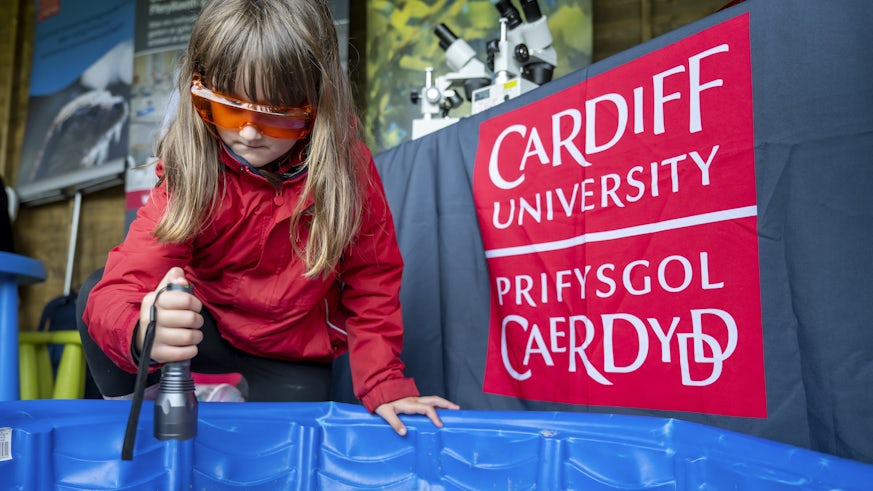Bioaccumulation Display launched at National Eisteddfod
10 October 2022

The School of Pharmacy and Pharmaceutical Sciences attended the National Eisteddfod of Wales from 30 July – 2 August, showcasing public engagement activities on the subject of bioaccumulation.
Whilst it has long been known that plastics and various manmade chemicals are finding their way into rivers and oceans, the scale of the problem of these materials accumulating inside the bodies of wild animals is only now becoming clear.
To highlight this important issue to the public, Prof. Jones and Dr Palmer, along with colleagues from the School of Biosciences, created a suite of educational resources. This work builds on the microplastics public engagement activity that was created in collaboration with The Young Darwinian through the CALIN network. This activity allows participants to detect very small pieces of plastic in sand by using a dye which fluoresces under a blue light and can be seen through orange glasses.

In addition to the problem of plastics, other chemicals find their way from industries, our homes and our bodies into the environment, and this includes medicines. This was highlighted in a final year project conducted by Pharmacy student Alice Davies and Professor Andy Westwell who identified a recent study by the University of York, which studied 258 rivers in 104 countries. Data showed that 25% of all waterways were found to contain pharmaceuticals at levels considered harmful to aquatic organisms. In another study 65% of surveyed rivers contained at least one antibiotic, a particularly dispiriting statistic when placed in the context of the global problem of antimicrobial resistance.
To better highlight this issue, the team collaborated with Dr Elizabeth Chadwick who heads up the Cardiff University Otter Project and biopsies of British otters have revealed bioaccumulation of medicines. To demonstrate this process fish and otter models were taken to the Eisteddfod. As small fish consume chemicals in their habitat, these chemicals accumulate in larger fish which predate these small fish, and are further accumulated in otters which predate the larger fish. The models at the festival made this bioaccumulation process clear as users fed the fish into otter models with visible stomachs.

The School of Pharmacy hopes that by bringing the problem into the public gaze, small steps can be taken to improve the situation. For example, any unused pharmaceutics should be returned to a local pharmacy, who will gladly receive them. Professor Jones stated, “There was a very nice link between all three activities to highlight the problem as a whole. Engagement with the public on all aspects of this exhibition was fantastic and I thank the whole engagement team including our Pharmacy Undergraduate students who helped make this a really exciting activity.”